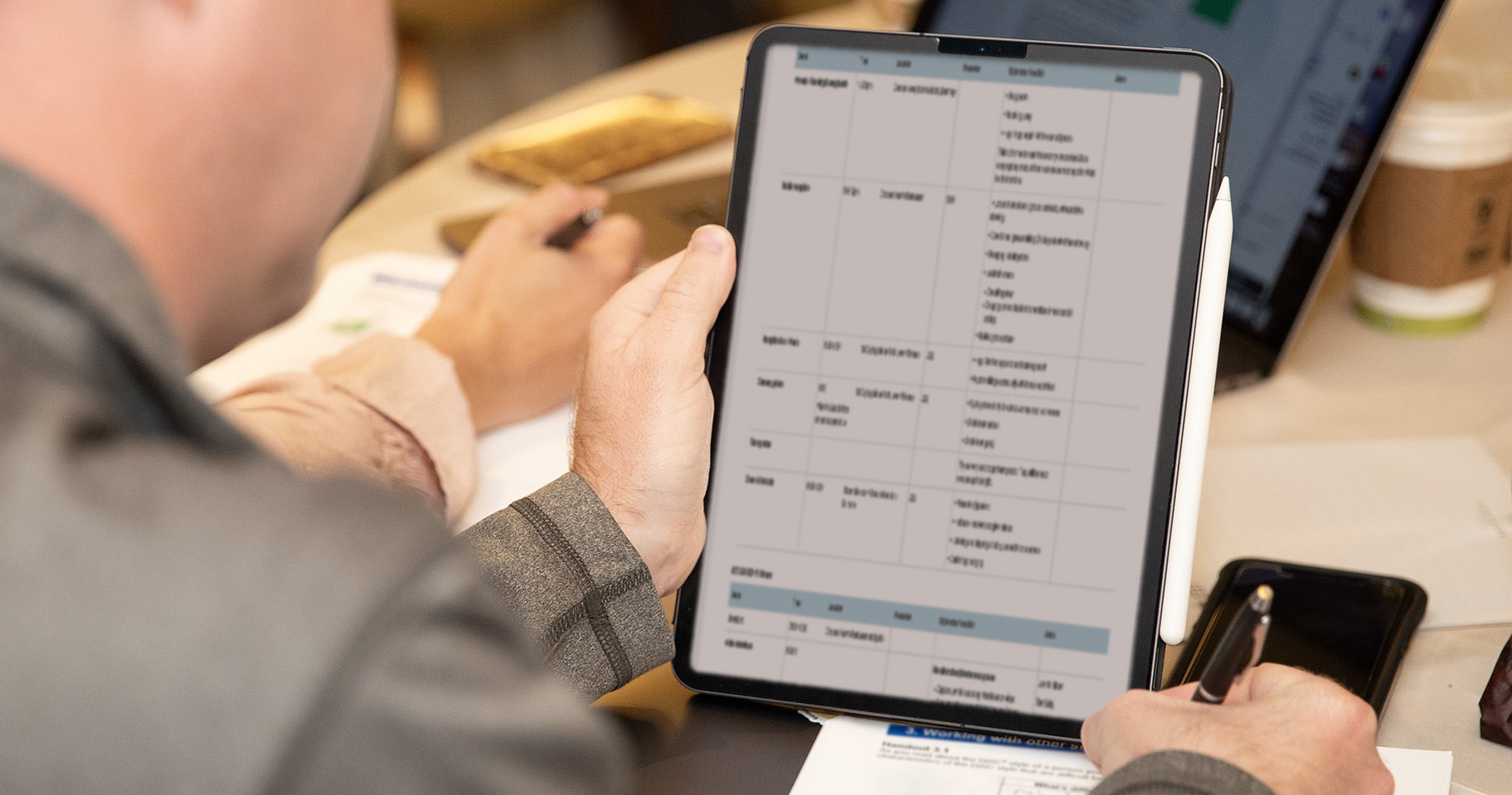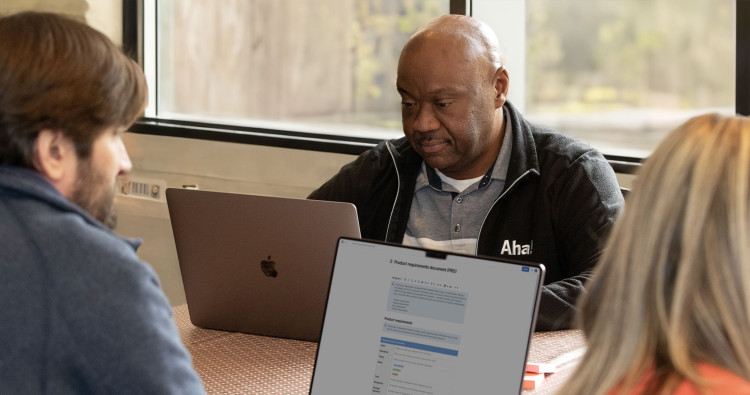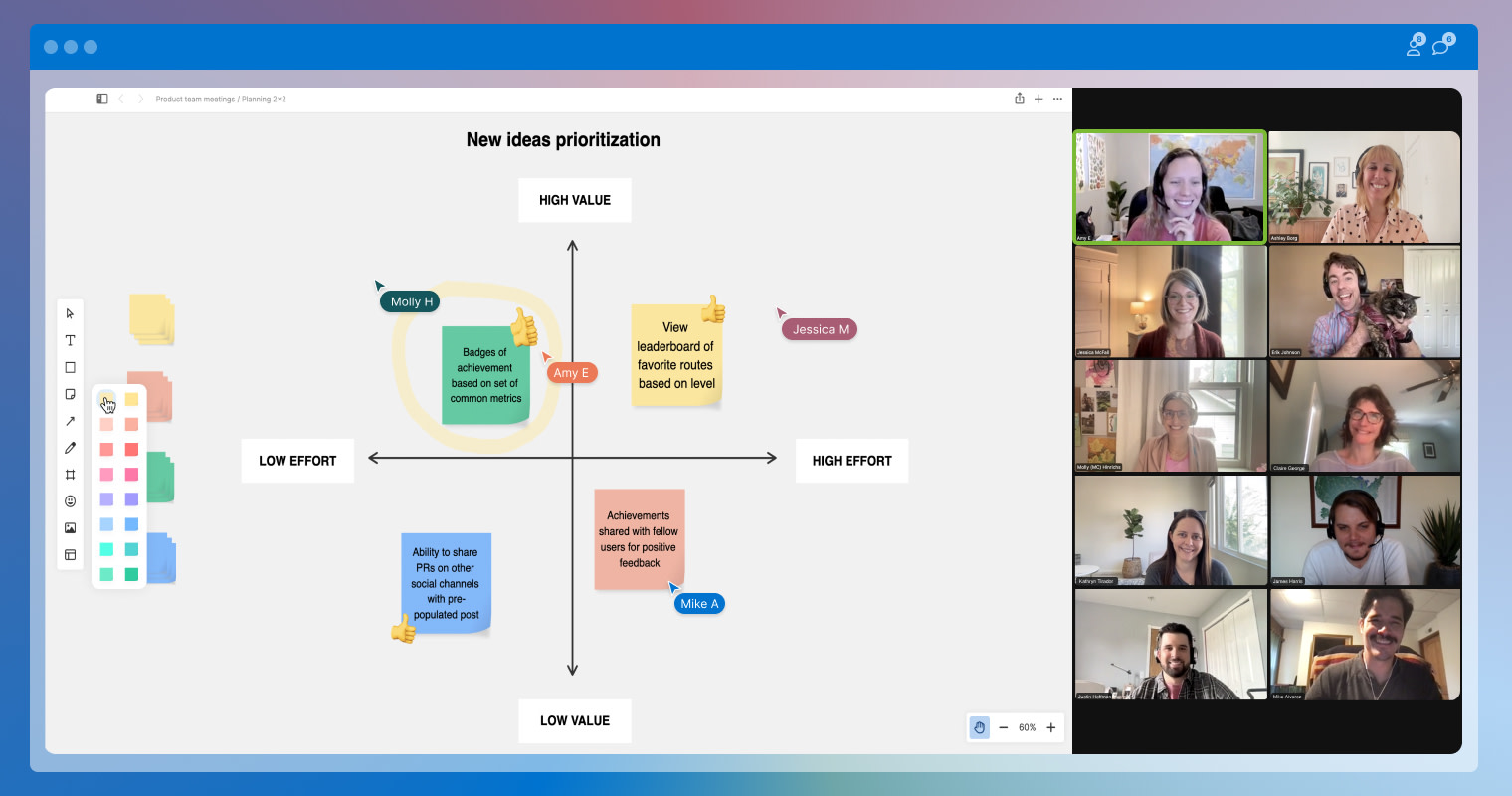
It is time to rethink your next brainstorm. | Photo by Jodi B Photography
Why most brainstorming sessions fail
Editor's note: Aha! Notebooks has been split into Aha! Knowledge and Aha! Whiteboards.
Where and when do you get your best ideas? Maybe it is when you are driving, on a quiet walk, or about to fall asleep at night. I am going to bet it is not when you are put on the spot during a call — one where you were given no advance notice of the agenda.
This is precisely why I think most brainstorming sessions are a waste of time. People do not have an opportunity to prepare and end up just staring expectantly at one another.
It surprises me how many teams still operate brainstorming meetings this way. Jumping on a spontaneous call without establishing guardrails for participation. No real sense of what the outcomes should be. And then the meeting drags on and on. It delays progress and often leads to groupthink.
Of course, I understand the motivation behind brainstorming sessions. Fresh ideas propel product development. It is super energizing to think creatively and solve problems with your teammates. There should be time set aside to ideate together and break free from your typical approaches.
The best ideas are transformative — redefining what is possible in product building.
Our own team has been rethinking the most effective ways to do this. With the launch of guided templates in Aha! Notebooks, we have new options for setting agendas and sharing ideas. But it is not just about using the right tools. Success depends on the right behaviors.
It starts with cutting the time-wasters that are holding you back:
Kicking off with chaos
Do you have a clear purpose in mind for your brainstorm? Unstructured or unplanned sessions breed half-formed ideas, or worse, silence. Communicate the goal of the meeting in advance, provide a tight agenda, and clarify expectations. Show the team you value their time by making each minute count.
Loving all ideas
Supporting teammates is essential. But that does not mean every idea that comes up needs to be celebrated. Lots of ideas with no analytical judgment means you have simply generated a list you cannot move ahead on. Instead, get curious. Ask questions and thoughtfully examine the team's assumptions. Be honest about what will truly work for your business, team, and customers.
Putting people on the spot
Quick thinking is not the same as good thinking. Providing your team with no runway to ideate and experiment on their own is a surefire way to reach a lazy compromise. Instead, share the intent of the brainstorm a few days in advance and give folks time to think through ideas and solutions on their own. People can add their thoughts to a shared whiteboard before the session and review what others have contributed.
Relying on the chatterbox
There is usually someone who is game to offer up lots of ideas. Many of them might be good. But it is a shame when brainstorming sessions are taken over by the loudest person in the room. Instead, consider creating parameters, like asking people to share only their top two or three ideas. If you use Aha! Notebooks, enable the authorship functionality on sticky notes within your whiteboard — this way you can see who has submitted what and ask them to share their thinking during the meeting.
Pursuing the impractical
In some contexts, you want to think big — for example, pushing the team to dream up new areas of functionality. Other times it is crucial to ground yourself in what is feasible and consider your team's resources, budget, and timeline. When you honor reality, you save time and energy by focusing on ideas that have a real shot of being implemented.
Ending without action
It is deflating to end a meeting with no clear direction. People poured their creative energy forth — but now what? Narrow your options while the time is ripe. Evaluate ideas against terms that matter to you. (We use the Aha! product value scorecard for this.) Kindly scrap the bad ideas, move the viable ones to your roadmap or backlog, and assign next steps. Forward motion is invigorating.
Not every brainstorming session is going to be perfect. But the process holds incredible promise for those willing to put in the work.
I am curious if breaking these bad brainstorming habits will lead to better ideas for your team. At the least, sessions together should be less draining and more productive. I would love to hear what else helps inspire your best thinking.
Do you need to improve your brainstorming sessions? Try Aha! Notebooks free for 30 days.




